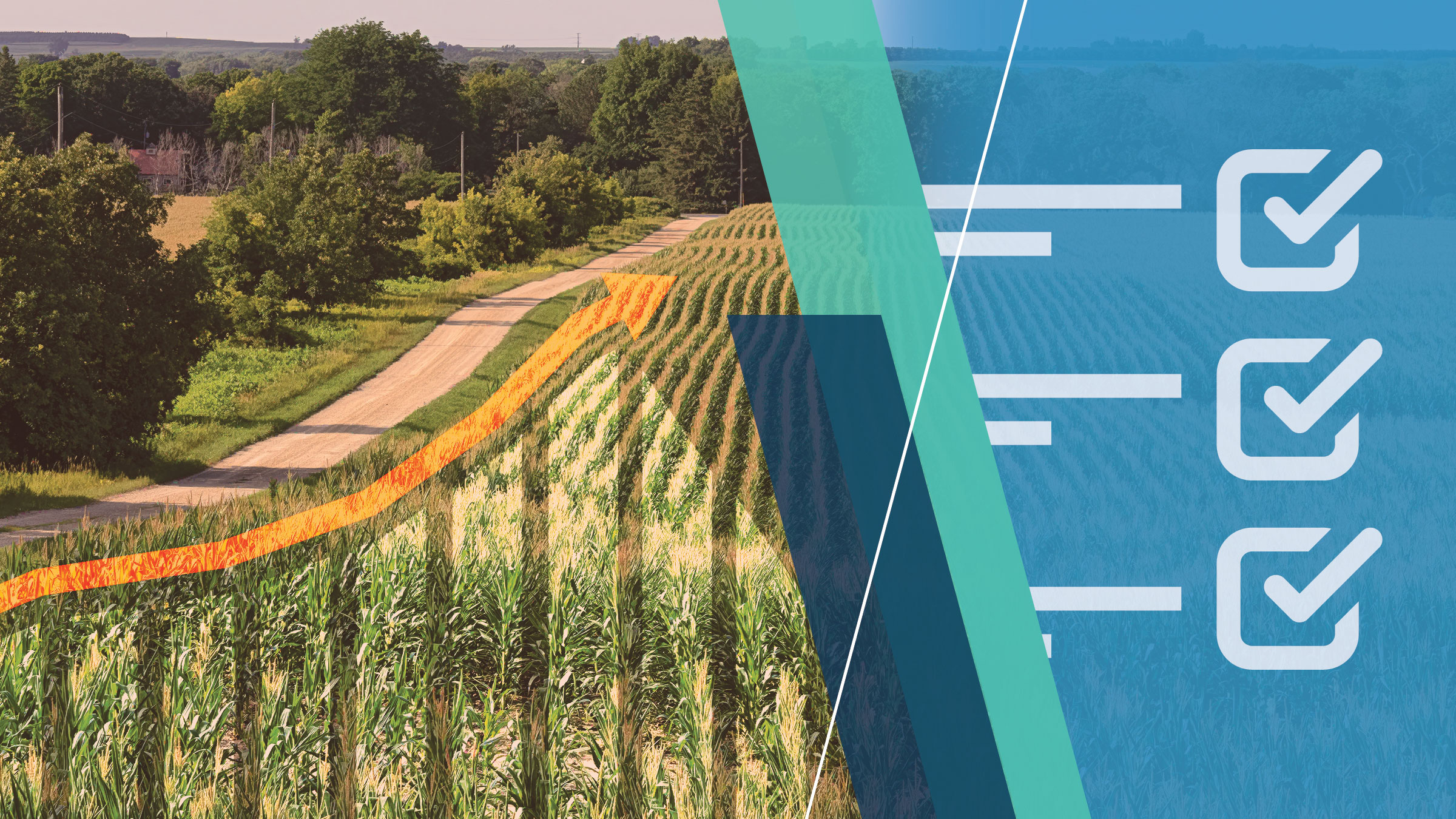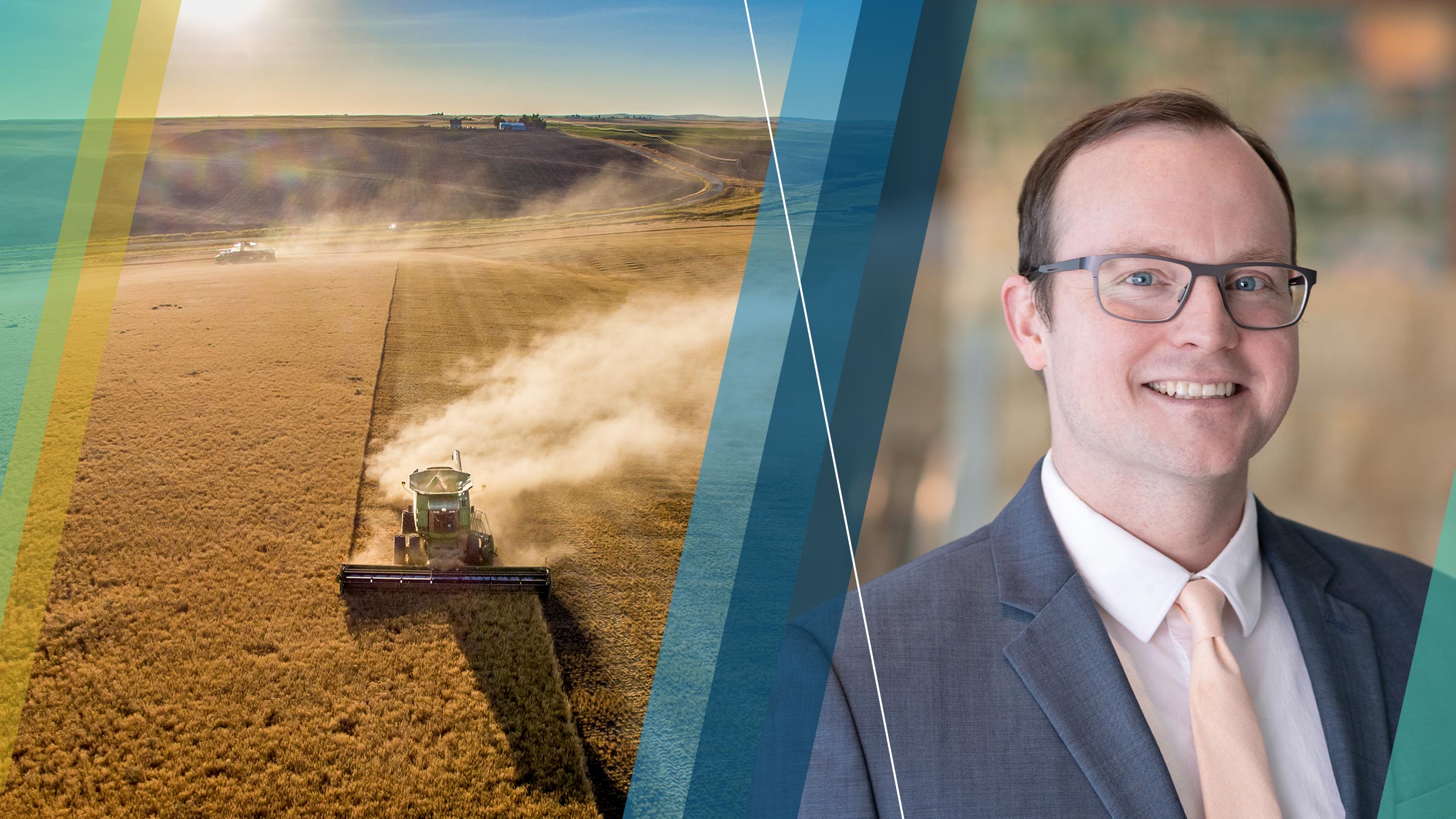Spring is a hopeful time, and for farmers, that means putting crops into the ground that they hope will produce good yields and sell for a profit. But as they headed to the fields this spring, the mood has been somber. “Lower commodity prices with higher interest rates are putting a lot of pressure on operations,” commented a South Dakota banker on a recent Federal Reserve Bank of Minneapolis survey.
According to lenders responding to the Minneapolis Fed’s first-quarter agricultural credit conditions survey, conducted in April, farm incomes and spending decreased over the opening three months of 2024. Falling incomes led to an increase in demand for loans, even at elevated interest rates. Renewals and extensions also increased on balance, while rates of loan repayment declined. Despite these negative financial trends, farmland values increased on average from a year earlier across the district, and cash rents increased slightly as well. The outlook for the growing season was pessimistic, as respondents expected further declines in farm incomes and spending.
Farm income, household spending, and capital investment
District agricultural bankers overwhelmingly agreed that farm incomes fell, as 70 percent of respondents indicated that incomes decreased in the first quarter of 2024 compared with the first quarter of 2023. By contrast, only 17 percent of respondents reported increased incomes. There was one notable exception: Several comments noted the strength of the cattle market, a commodity whose price has continued to increase over the past year as crop and other animal products have fallen. “Cattle men are happy,” said a North Dakota lender. “Wheat farmers are not.”
Investment in equipment and buildings by farming operations also fell, as 53 percent of respondents reported decreased capital spending compared with 15 percent who reported an increase. However, household spending by farmers increased on balance.
Demand for loans, required collateral, and interest rates
Given tighter cash conditions for farms, loan demand grew further. More than half of bankers in the survey reported greater loan demand in the first quarter relative to the same period a year earlier, compared with 17 percent who noted decreased loan demand. The increase in loan demand was notable given two years of increasing interest rates. However, average interest rates recently ticked down slightly for most fixed and variable loan categories in the first quarter, with the exception of variable machinery loans, which increased slightly. The amount of required collateral increased at 15 percent of agricultural banks.
Loan repayments and renewals
“Overall renewals are going well,” commented a South Dakota banker. While 23 percent of lenders said the number of renewals and extensions increased, 75 percent reported no change in renewal activity. Falling income affected loan repayments, with 27 percent reporting a decline in repayments, and most others reporting no change.
Cash rents and land values
The growth in land values seen over the past several years continued but tapered off, and cash rents also grew. Ninth District nonirrigated cropland values increased by more than 3 percent on average from the first quarter of 2023. Irrigated cropland values rose by nearly 10 percent from a year ago, while ranch- and pastureland values edged up 6 percent. The district average cash rent for nonirrigated land rose by just 1 percent from a year ago. Rents for irrigated land increased slightly more than 1 percent, while ranchland rents increased 7 percent. Changes in land values and rents were generally consistent across district states.
Outlook
Expectations heading into the growing season were broadly pessimistic. Across the district, 75 percent of respondents predicted that farm income will decrease in the second quarter from the same period in 2023, compared with only 8 percent forecasting increases. The outlook for capital spending was also down sharply, with 62 percent expecting declines. A slightly greater share of lenders expected a decrease in household spending than those expecting an increase, though more than half anticipated no change.
Respondents also expected a further uptick in borrowing in the upcoming quarter; 55 percent of lenders thought that loan demand will increase and, on balance, they also expected renewals and extensions to increase. The outlook for loan repayment was negative overall, though most bankers expected no change in repayment rates. One in 5 bankers expected to increase collateral requirements for borrowers.
As always, much of the outlook is weather dependent, and ag lenders across the region were concerned about the lack of snowfall over the winter. “Commodity prices have continued to decline, rates are still high, input costs are the same,” said a South Dakota banker. “Need moisture this spring.”
| MN | MT | ND | SD | WI | Ninth District | |
|---|---|---|---|---|---|---|
| Percent of respondents who reported decreased levels for the past three months compared with the same period last year: | ||||||
| Rate of loan repayments | 35 | – | 33 | 23 | – | 27 |
| Net farm income | 85 | 33 | 75 | 54 | 67 | 70 |
| Farm household spending | 19 | – | – | 31 | 33 | 17 |
| Farm capital spending | 62 | 33 | 58 | 38 | 67 | 53 |
| Loan demand | 23 | 33 | 17 | – | – | 17 |
| Percent of respondents who reported increased levels for the past three months compared with the same period last year: | ||||||
| Loan renewals or extensions | 23 | – | 42 | 15 | 33 | 23 |
| Referrals to other lenders | 4 | 17 | – | – | – | 3 |
| Amount of collateral required | 12 | – | 33 | 15 | – | 15 |
| Loan demand | 54 | 33 | 58 | 54 | 100 | 55 |
| MN | MT | ND | SD | WI | Ninth District | |
|---|---|---|---|---|---|---|
| Percent of respondents who expect decreased levels for the next three months: | ||||||
| Rate of loan repayments | 35 | 17 | 33 | 46 | 33 | 35 |
| Net farm income | 92 | 17 | 75 | 62 | 100 | 75 |
| Farm household spending | 31 | – | 17 | 31 | 67 | 27 |
| Farm capital spending | 73 | 33 | 58 | 46 | 100 | 62 |
| Loan demand | 23 | 17 | 8 | 8 | – | 15 |
| Percent of respondents who expect increased levels for the next three months: | ||||||
| Loan renewals or extensions | 24 | – | 42 | 23 | 33 | 25 |
| Referrals to other lenders | 12 | 17 | – | – | – | 7 |
| Amount of collateral required | 19 | 17 | 25 | 23 | – | 20 |
| Loan demand | 54 | 50 | 67 | 38 | 100 | 55 |
| Operating | Machinery | Real estate | |||||
|---|---|---|---|---|---|---|---|
| Fixed | Var. | Fixed | Var. | Fixed | Var. | ||
| Q2-22 | July | 5.5 | 5.4 | 5.5 | 5.3 | 5.4 | 5.1 |
| Q3-22 | October | 6.5 | 6.3 | 6.2 | 6.1 | 5.9 | 5.8 |
| Q4-22 | January | 7.7 | 7.6 | 7.3 | 7.3 | 7.0 | 7.0 |
| Q1-23 | April | 8.1 | 8.0 | 7.6 | 7.6 | 7.3 | 7.4 |
| Q2-23 | July | 8.5 | 8.5 | 7.9 | 8.0 | 7.5 | 7.5 |
| Q3-23 | October | 8.8 | 8.7 | 8.3 | 8.2 | 7.9 | 7.9 |
| Q4-23 | January | 8.8 | 8.7 | 8.3 | 8.3 | 8.0 | 8.0 |
| Q1-24 | April | 8.6 | 8.6 | 8.2 | 8.4 | 7.9 | 8.0 |
Joe Mahon is a Minneapolis Fed regional outreach director. Joe’s primary responsibilities involve tracking several sectors of the Ninth District economy, including agriculture, manufacturing, energy, and mining.






